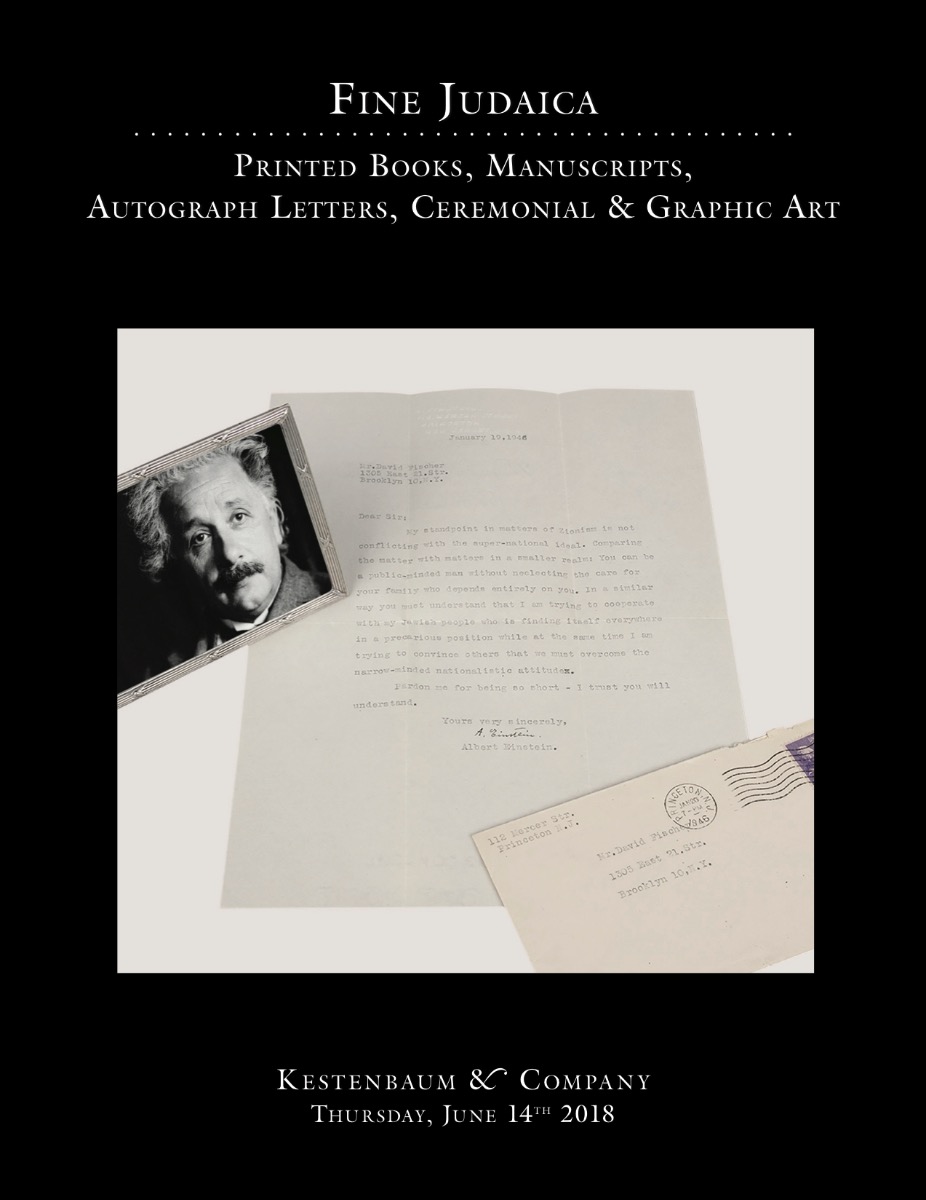Pius Papa V. Praeceptum De Iudæorum exterminatione ex omni dominio temporali S.R.E. & subditorum, præter Romam & Anconam.

AUCTION 76 |
Thursday, June 14th,
2018 at 3:00 PM
Fine Judaica: Printed Books, Manuscripts, Autograph Letters, Ceremonial & Graphic Art
Lot 186
(ITALY).
Pius Papa V. Praeceptum De Iudæorum exterminatione ex omni dominio temporali S.R.E. & subditorum, præter Romam & Anconam.
Rome: Heirs of Antoni Bladi, February 26th 1569
Est: $4,000 - $6,000
<<The expulsion of the Jews from all Papal territory.
>> Papal Bull of Pius V, beginning with the significant phrase Hebracorum gens [“Hebrew people”] accusing the Jews of religious seduction, soothsaying and the practice of magic. It orders the expulsion of the Jews from all Papal territory with the exception of Rome and Ancona.
As Cardinal Ghislieri, Pope Pius V had been head of the Inquisition and led the assault on Jewish literature during the decade preceding his canonization. His devotion to the cause of the Counter-Reformation is evident by the return of an atmosphere of repression following his election to the papacy.
The order of expulsion was a shocking blow to Italian Jewry. From numerous towns and cities where often prosperous congregations had existed for generations, Jews were abruptly banished, their places of worship boarded up and cemeteries destroyed. The majority of the exiles had no choice but to crowd together in the already congested Roman Ghetto. Rome and Ancona were exempt from the ban because of the importance of Jewish trade with the Levant.
In 1586, the papal Bull of Sixtus V, Christiana pietas, (“Christian piety”) relieved the Jews of many of the oppressive social and economic restrictions imposed by Paul IV and Pius V. However in 1593, the infamous Papal Bull of Clement VIII, Caeca et obdurata (“Blind and Obdurate”), restored the previous state of oppression, remaining in force until the 19th century.
See Kenneth R. Stow, Catholic Thought and Papal Jewry Policy 1555-1593 (1977), pp. 36-8; and C. Roth, The History of the Jews of Italy (1946), pp. 305-8; EJ, Vol. IV, col. 1496.
